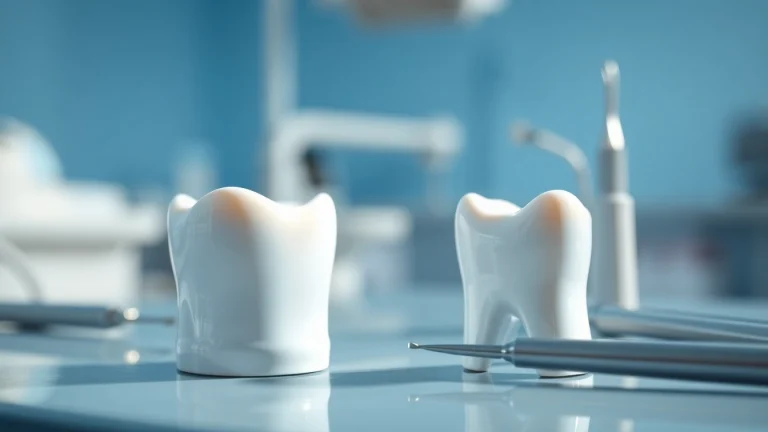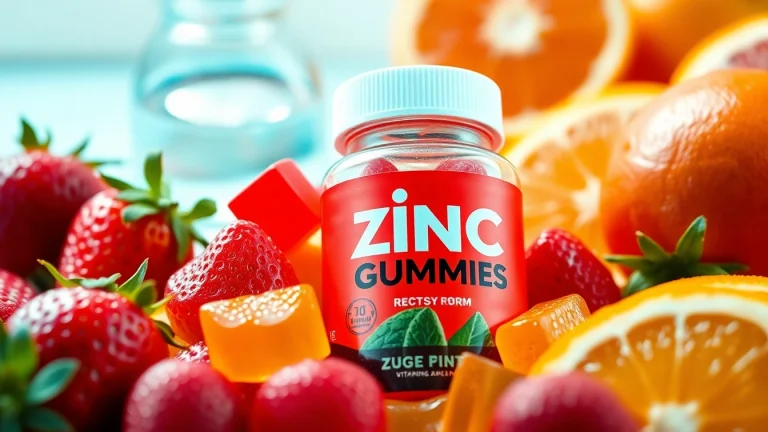
Understanding Crowns: Types, Benefits, and Care for Dental Restoration
What are Dental Crowns?
Definition and Purpose of Crowns
A dental crown is a tooth-shaped cap that is placed over an existing tooth to restore its shape, size, strength, and improve its appearance. Crowns can be used for various dental issues, including the restoration of decayed or damaged teeth, covering dental implants, and holding dental bridges in place. They serve both functional and aesthetic purposes, making them a vital component of restorative dentistry.
The primary aim of a crown is to provide support to a weak tooth or a tooth that has suffered extensive damage. It effectively encapsulates the tooth, preserving the structure while allowing it to regain functionality. For those interested in dental restorations, crowns are often at the forefront of discussions regarding dental restoration options.
Common Scenarios for Using Crowns
Crowns are typically recommended in several scenarios, including but not limited to:
- Damaged Teeth: If a tooth is cracked or severely worn down, a crown can provide the necessary strength and function.
- Large Fillings: In cases where a tooth has a substantial filling and not enough tooth remains to support it, a crown can offer additional stability.
- After Root Canals: Teeth that have undergone root canal therapy often require crowns to protect them from future fractures.
- Dental Implants: Crowns are often placed on top of dental implants to replace missing teeth.
- Aesthetic Enhancements: Crowns can be utilized to improve the appearance of discolored or misshaped teeth.
The Structure of Dental Crowns
Dental crowns can be made from a variety of materials, including metal, porcelain, resin, and combinations of these materials. The structure of a crown depends on the material used, which affects durability and aesthetics:
- Metal Crowns: Typically made from alloys, these crowns are incredibly strong and resistant to wear.
- Porcelain Crowns: These crowns can blend seamlessly with natural teeth, making them a popular choice for front teeth.
- Resin Crowns: A less durable option, but usually more affordable compared to other materials.
- Porcelain-Fused-to-Metal Crowns: These crowns combine the strength of metal with the aesthetics of porcelain.
Types of Dental Crowns
Metal Crowns: Benefits and Drawbacks
Metal crowns are composed of alloys, providing a robust and durable solution for dental restoration. Their resistance to wear makes them an excellent option for molars and areas that endure heavy chewing forces. However, while they are highly functional, their metallic appearance is a disadvantage for those seeking a natural look.
Benefits:
- Strength and durability.
- Less tooth reduction is required compared to porcelain alternatives.
- Good for back teeth due to their resistance to wear.
Drawbacks:
- Not aesthetically pleasing for visible areas.
- May cause allergic reactions in some individuals.
Porcelain Crowns: Aesthetic and Functional Advantages
Porcelain crowns offer the most natural appearance among all crown types, closely resembling the translucency and color of natural teeth. These are optimal for front teeth restorations. However, they can be more brittle compared to metal crowns and may not be ideal for areas that experience high bite pressure.
Benefits:
- Natural look and feel.
- Excellent color matching with existing teeth.
Drawbacks:
- Less durability compared to metal crowns.
- More tooth structure may need to be removed for placement.
Resin and Porcelain-Fused-to-Metal Crowns
Resin crowns are a more cost-effective alternative, offering a reasonable fit and aesthetic appeal. However, they wear down quickly compared to other materials.
On the other hand, porcelain-fused-to-metal crowns combine the strength of metal with the aesthetic appeal of porcelain. They offer good durability while blending better with natural teeth than full metal crowns.
Benefits of Resin:
- Economical.
- Acceptable aesthetic quality.
Drawbacks of Resin:
- Durability concerns; prone to chipping and cracking.
Benefits of Porcelain-Fused-to-Metal:
- Durable and aesthetically pleasing.
- Good for both function and appearance.
Drawbacks of Porcelain-Fused-to-Metal:
- May show a dark line at the gum line over time.
- More expensive than resin crowns.
The Crown Placement Procedure
Initial Consultation and Planning
The journey to obtaining a dental crown begins with an initial consultation. During this appointment, the dentist evaluates the patient’s dental health and discusses concerns and treatment goals. They may take X-rays to assess the condition of the tooth and surrounding structures.
The dentist will review various crown options based on the patient’s specific needs, preferences, and budget. Planning also involves selecting the most suitable material for the crown, ensuring both functional and aesthetic satisfaction.
The Process of Crown Placement
Crown placement typically occurs over two visits:
- First Visit: The dentist prepares the tooth by removing any decay and shaping the remaining structure to accommodate the crown. Once shaped, a mold or impression is taken, which will be used to create the custom crown. A temporary crown is often placed to protect the prepared tooth while the permanent one is being fabricated.
- Second Visit: When the permanent crown is ready, the patient returns to the office. The dentist removes the temporary crown and checks the fit, color, and bite of the new crown. Once confirmed, the crown is permanently cemented in place.
Post-Procedure Care for Crowns
After the placement of a crown, patients may experience sensitivity for a few days. It is crucial to follow the dentist’s aftercare instructions, which typically include:
- Avoiding hard foods for some time.
- Practicing good oral hygiene to maintain the structure surrounding the crown.
- Attending follow-up appointments to ensure proper fitting and function.
Cost Considerations for Dental Crowns
Average Costs of Different Types of Crowns
The cost of dental crowns can vary significantly based on materials, geographic location, and specific dental practice pricing. Here’s a general overview:
- Metal Crowns: $800 to $3,000
- Porcelain Crowns: $1,000 to $2,500
- Porcelain-Fused-to-Metal Crowns: $500 to $1,500
- Resin Crowns: $300 to $1,500
Insurance often covers a part of the cost, but patients should check their coverage details.
Insurance Coverage and Payment Options
Many dental insurance plans cover a portion of the cost of crowns. However, coverage can vary widely based on the plan, the material chosen, and whether the crown is considered a medically necessary procedure. Patients should consult with their insurance provider and the dental office to understand what is covered. Payment plans or financing options may also be available for those without insurance or needing assistance in covering the costs.
Factors Influencing the Cost of Crowns
Several factors can influence the overall cost of dental crowns, including:
- Material Type: As previously noted, different materials have varying price points.
- Geographic Location: Prices can vary depending on the dental market in different areas.
- Preparation Needed: Additional procedures may be required before crown placement, which can increase costs.
- Dental Practice: The experience level and reputation of the dentist can affect pricing.
Maintaining and Caring for Your Crowns
Daily Care Tips for Longevity
Proper care and maintenance can significantly extend the life of a dental crown. Here are some daily care tips:
- Brush twice a day with a fluoride toothpaste.
- Floss daily, targeting the area around the crown to prevent plaque buildup.
- Use an antibacterial mouthwash to reduce bacteria in the mouth.
- Avoid biting hard foods or objects, which can damage the crown.
Signs of Problems with Crowns
It is essential to monitor crowns for any signs of issues. Common indicators that a crown may be problematic include:
- Increased sensitivity to hot or cold temperatures.
- Visible cracks or chips in the crown.
- Discomfort or pain in the surrounding gums.
- Loosening of the crown from the tooth.
When to Consult Your Dentist
If any of the signs above are present, or if there are ongoing concerns about the crown’s fit or appearance, it is crucial to consult with a dentist as soon as possible. Early intervention can prevent further complications and ensure that the crown remains functional and effective.


